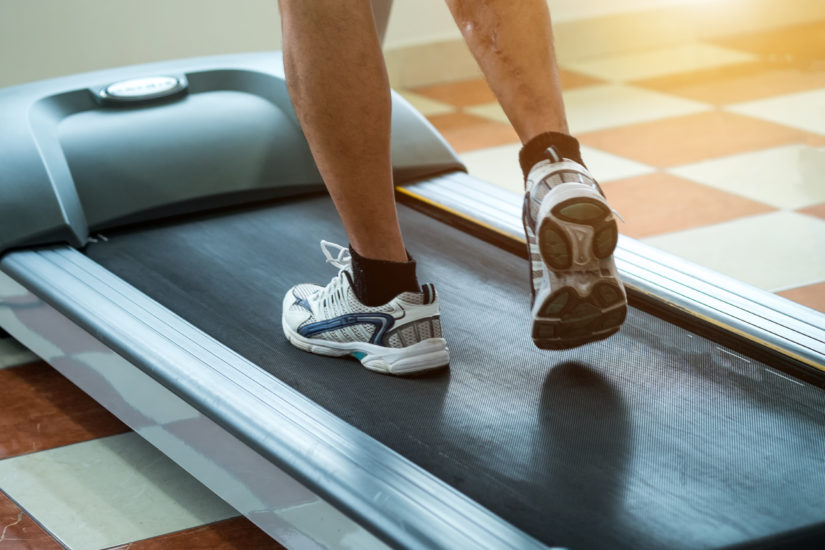10.18.2021
By FSG Dev
Combining Two Walking Therapies

USC researchers study how combining two walking rehabilitation approaches might improve outcomes for survivors of stroke.
EVERY 40 SECONDS, someone in the United States suffers a stroke, according to the Centers for Disease Control.
And while stroke is the fifth leading cause of death in the United States, it is much more likely to cause serious disability requiring physical therapy treatment.
Physical therapists could soon have something new in their toolbox to improve outcomes for survivors of stroke whose gait has been affected, thanks to a $100,000 Magistro Family Foundation Research Grant awarded to a Division research team, led by Assistant Professor Kristan Leech.
Related: Amid Pandemic, FPTR Advances Physical Therapy Research
A Better Way Forward?
“The International Classification of Functioning, Health and Disability framework divides walking dysfunction into two domains: impaired walking patterns (e.g. kinematic deviations) and limited walking activity (e.g. slow walking speeds),” Leech said. “Impaired walking patterns are typically addressed through biofeedback-based gait training that promotes intentional changes in voluntary movement. In contrast, the gold standard for improving limited walking activity is aerobic exercise intensity-based gait training.”
In the new study, titled “A novel, comprehensive approach to gait rehabilitation post-stroke,” USC researchers, including co-investigators Associate Professor James Finley and Professor Carolee Winstein MS ’84, aim to better understand how combining the two approaches might improve physical therapy outcomes.
The Set-Up
The study will consist of two separate experiments. In the first experiment, the investigators will compare the short-term effects of feeding back three different features of how someone walks to understand better which gait biofeedback variable is the most effective in eliciting the greatest walking pattern movement.
In the second experiment, researchers will test the capacity of survivors of stroke to make biofeedback-driven walking pattern changes at three different aerobic intensities (or speeds) of walking.
“If successful, this work stands to improve the current standard of care in gait rehabilitation post-stroke by improving the efficiency and efficacy of physical therapy interventions — ultimately reducing disability in this increasing population,” Leech explained.
The study will take place over two years and will require 50 survivors of stroke to participate.
Grateful for the Continued Support
Leech joined the USC Division of Biokinesiology and Physical Therapy in 2019, after having earned her DPT degree from the University of Illinois at Chicago, her PhD in neuroscience from Northwestern University and completing her postdoctoral fellowship at Johns Hopkins University.
It was as an undergraduate at the University of Arizona that Leech’s interest in walking rehabilitation became clear, while working at a disability resource center in the gym that had been adapted for people with disabilities.
“I had the opportunity to meet people with a range of disabilities, many of whom were generous enough to share with me their experiences in physical therapy. Through these conversations, a common theme emerged — many people wanted to improve their ability to walk,” she said. “During my doctorate of physical therapy training, I eagerly learned about walking rehabilitation. The more I studied the scientific theory and the related clinical practices to improve walking, the more I realized how much is still unknown.”
While the Magistro Family Foundation Research Grant is the first grant Leech has received as an independent investigator, she previously received PODS I and II Scholarships from the Foundation for Physical Therapy Research, the organization that awards the Magistro Family Foundation Research Grant.
“I am extremely grateful for the continued support from the Foundation for Physical Therapy Research,” Leech said. “It has been pivotal to my development as a clinical scientist.”
The study will take place in the Gait Rehabilitation and Motor Learning Lab. In addition to the Division faculty members taking part, Professor of Preventive Medicine Wendy Mack from the Keck School of Medicine will also collaborate in the investigation.

